Tag: art
Event Showcases Art Collections from Around Campus and Beyond
Thank you to everyone who attended our successful event on Tuesday, February 13th, showcasing many of the Library’s treasures from around campus:
Open House + Arts/Visual Collections Showcase
Students, faculty, staff, and members of the public enjoyed seeing rare and special collection items from collections such as: the Bancroft Pictorial Collections; Artists’ books from the Environmental Design Library and the Bancroft Library; prints from the Graphic Arts Loan Collection at Morrison Library; media resources from the Media Resources Center; image collections from the Visual Resources Center in the History of Art Department and the College of Environment Design; and many more!
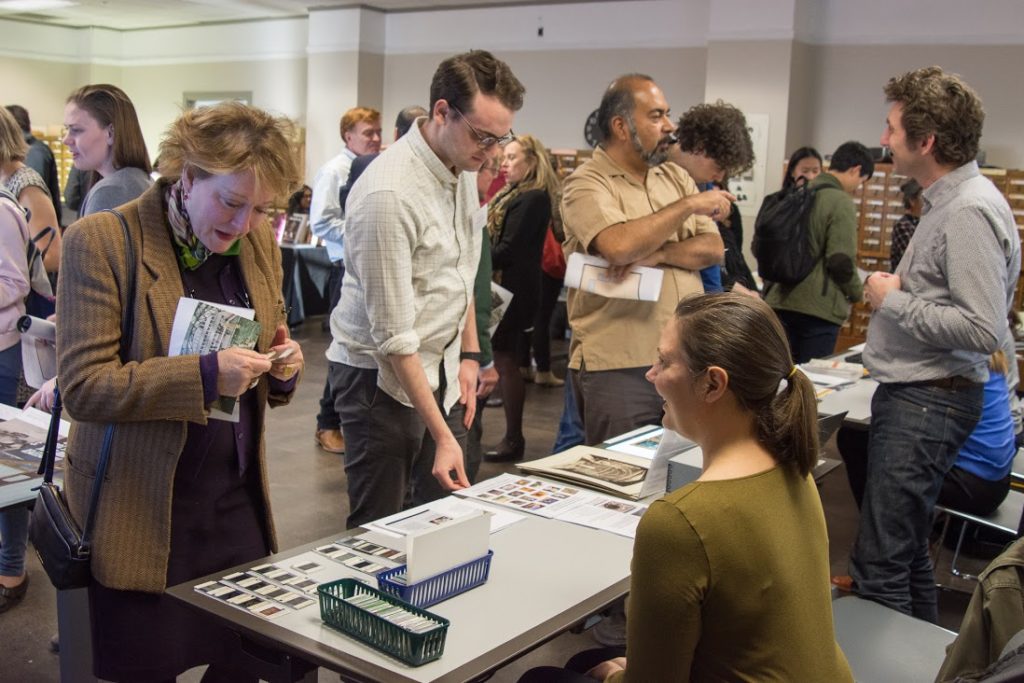
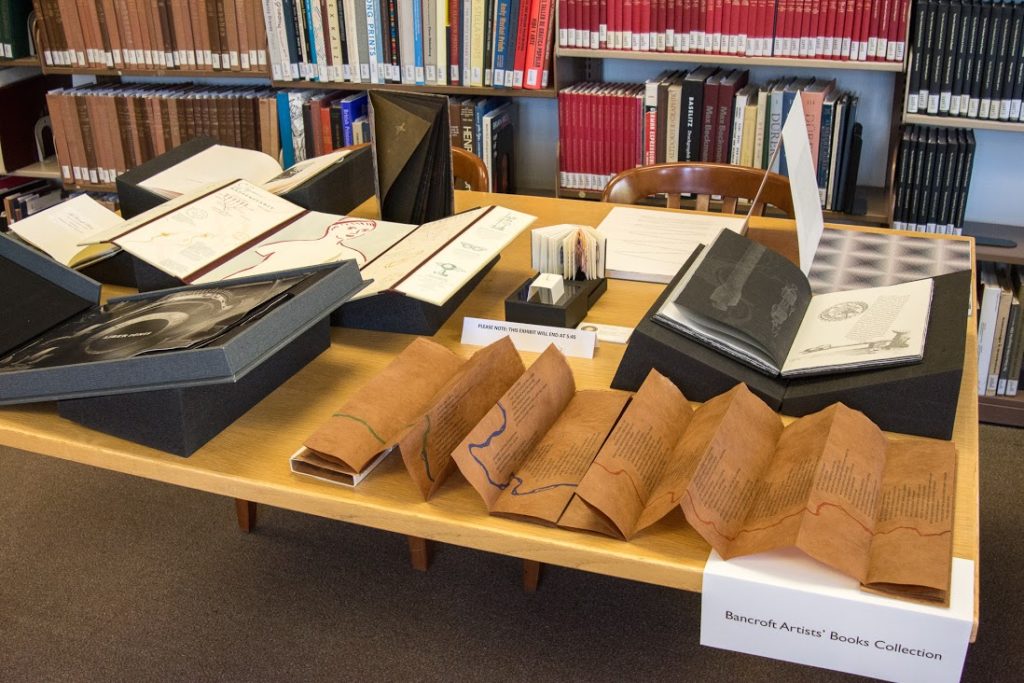
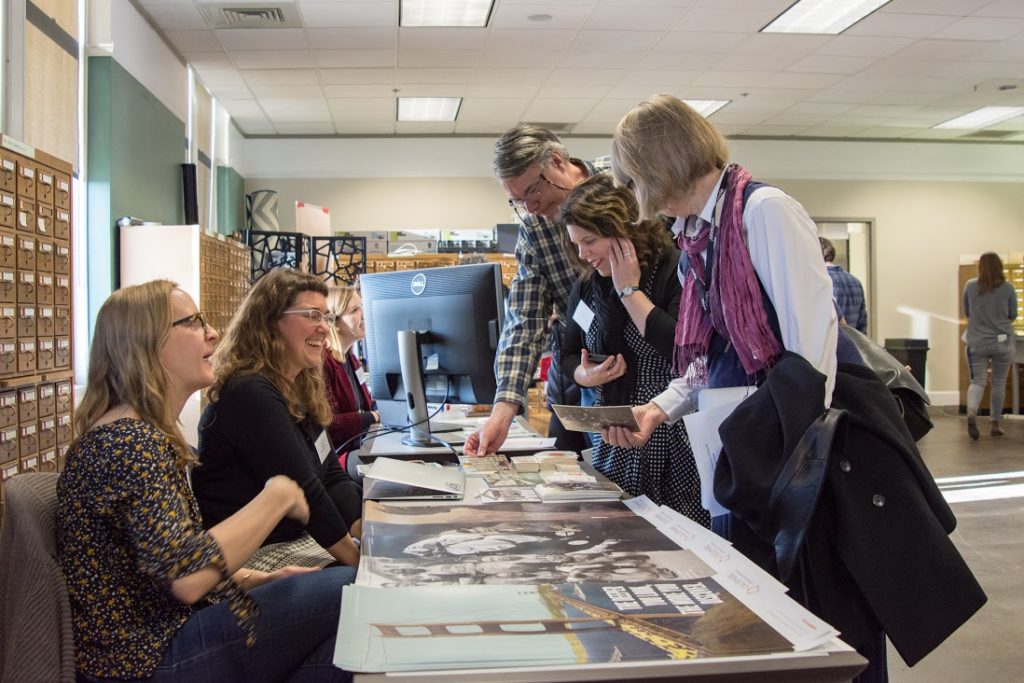
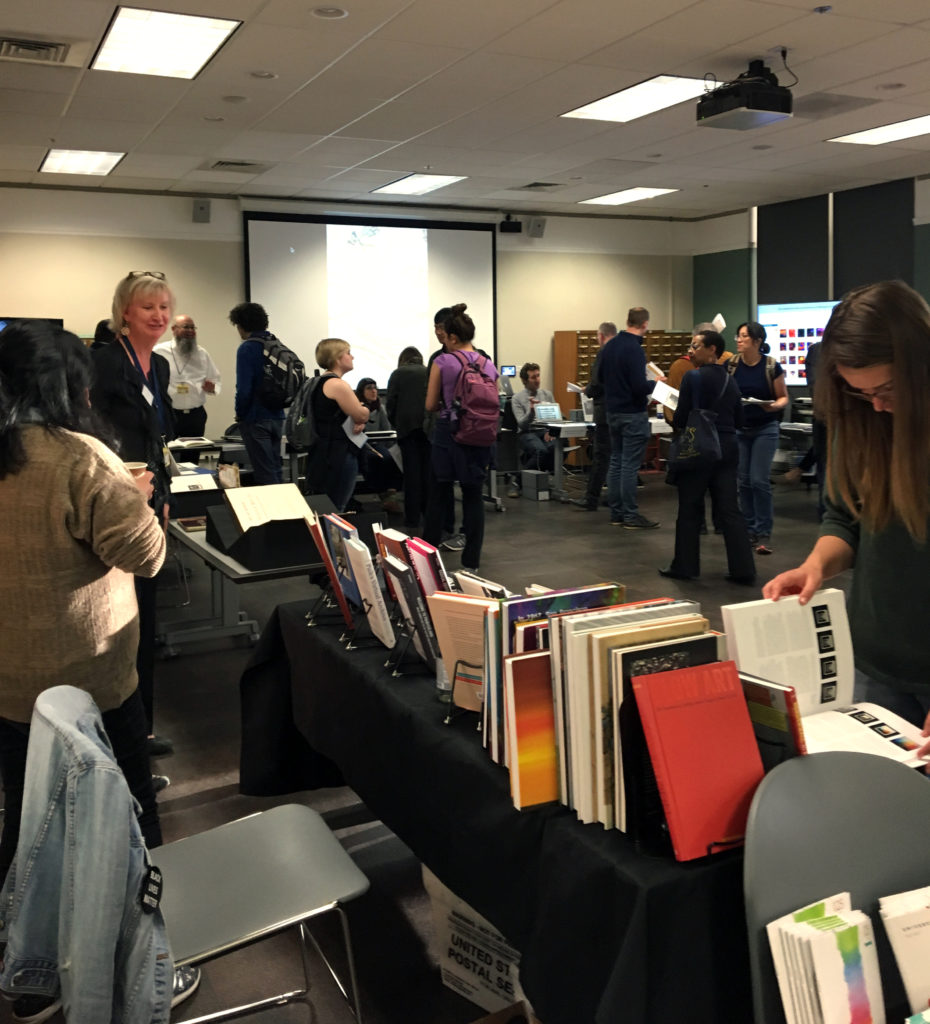
Art + Feminism + Race + Justice Wikipedia Edit-a-Thon
Art + Feminism + Race + Justice Wikipedia Edit-a-Thon
Drop in any time, stay as long as you like!
Tuesday, March 6, 12:00pm-5:00pm
Moffitt 405
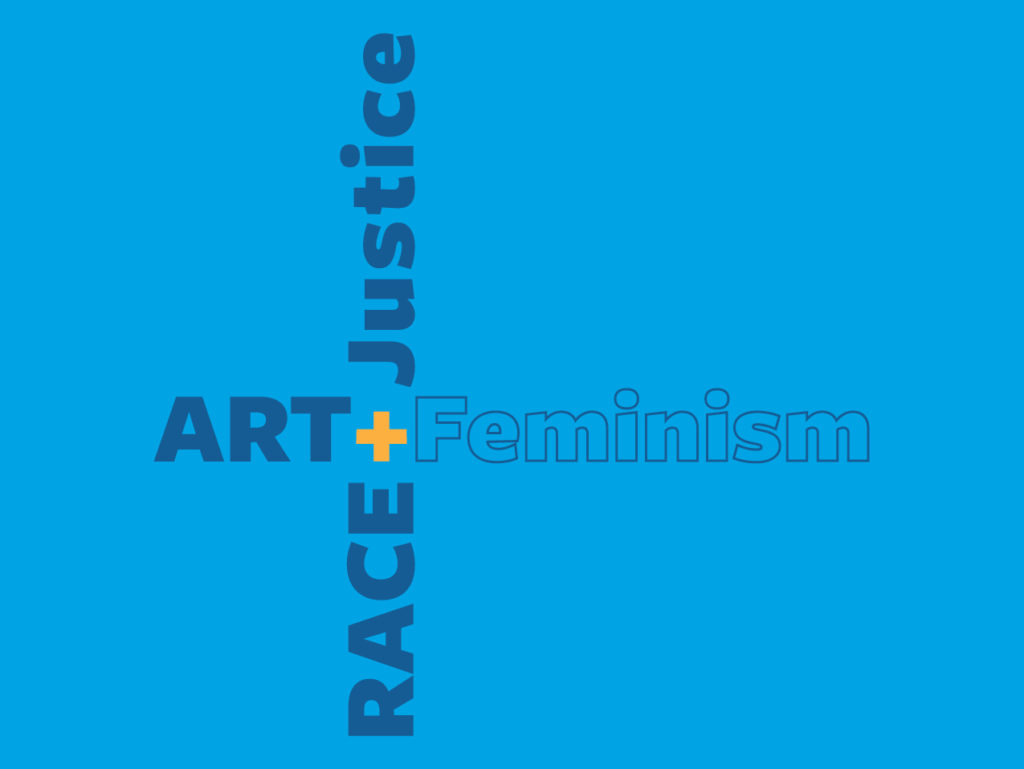
Wikimedia’s gender trouble is well-documented. While the reasons for the gender gap are up for debate, the practical effect of this disparity is not: content is skewed by the lack of female participation. This represents an alarming absence in an important repository of shared knowledge. Let’s change that! Drop by the A+F Wikipedia Edit-a-Thon, learn how to edit Wikipedia and make a few changes of your own! This year, we’re partnering with the American Cultures program and expanding the scope to highlight the theme of race and justice. We are now calling it the Art+Feminism+Race+Justice Wikipedia Edit-a-thon.
-
People of all gender identities and expressions welcome.
-
Bring a laptop.
-
Drop in for half an hour or stay for the whole afternoon.
-
No editing experience necessary; we’ll provide training and assistance.
-
Optional: Training sessions at 12:30 & 2:30.
-
Get a headstart! Create an editing account ahead of time.
-
-
Refreshments will be provided.
Learn more!
http://guides.lib.berkeley.edu/wikipedia-edit-a-thon
RSVP (encouraged, but not required)
A Cal ID card is required to enter Moffitt. The Library attempts to offer programs in accessible, barrier-free settings. If you think you may require disability-related accommodations, please contact us.
___________________________________________
Getty Oral Histories: Jim Druzik and Neville Agnew
We are pleased to announce the release of two new oral histories in our continuing partnership with the Getty Trust to document the careers of extraordinary artists, scientists, preparators, scholars, and administrators that have guided and shaped the Getty over the past thirty years. Historians Todd Holmes and Paul Burnett spent four days alternating full-day interview sessions in an intense baptism into the world of conservation science, exploring the careers of two remarkable scientists from the 1960s through to the present: Jim Druzik and Neville Agnew.
Foxes and Hedgehogs: Jim Druzik and the Development of the Field of Conservation Science
Getty Conservation Institute Senior Scientist Jim Druzik had a baptism of his own rubbing shoulders with the geniuses of postwar modern art as they worked together on installations at the Pasadena Museum of Modern Art. Trained as a chemist, and with one foot ever in the scientific world, Jim very quickly applied the latest scientific research to the problems of conservation. He joined the Getty Institute of Conservation in 1985, and soon established himself as a world leader in conservation science, always concerning himself with how the physical and chemical composition of museum artifacts reacted with the physical and chemical composition of their environments. But much more than that, Druzik was a student of the larger social and economic context of the museum world, taking advantage of initiatives in pollution research, assessments of industrial chemicals, and energy conservation, to name just a few, to make the museum world a better, more accessible and sustainable place. Finally, Jim is very reflective about his roles as a scientist and an administrator. He understands that the world of science and the world of the museum are defined by the people who work in them and on them. Science is social, as the historians are fond of saying, and the keys to Jim’s success can be found as much in his enthusiasm for the people he works with as for the work he does with them.
Neville Agnew: Thirty Years of Cultural Heritage Site Conservation with the Getty Trust
South-African-born Neville Agnew is a more nomadic scientist. If Jim’s work brings laboratory tools to the museum environment, Neville’s brings lab techniques and tools far out into the field. Whether raising and preserving the guns of a long-lost naval vessel off the north coast of Australia, or studying the deterioration of the Great Sphinx in Egypt, or restoring ancient Buddhist cave paintings in southwestern China, Neville underscores the fact that international conservation work is not just bringing the tools of the laboratory to bear on ancient sites, but also a skillful diplomatic effort to build and maintain the partnerships—between project sponsors, international conservation research teams, national political leaders, and local communities—needed to conduct such work. He explores the tension between an ideal of conservation in controlled environments versus the compromises inherent in dealing with “immovable cultural property.” At a time when the willful destruction of cultural heritage is almost a daily news item, we are reminded of the importance and fragility of the work that both of these scientists have done to protect the world’s art and cultural heritage for future generations.
Paul Burnett and Todd Holmes, Historians/Interviewers, January 2017
Ed Ruscha: A New Oral History with the Artist
In partnership with the Getty Trust, we are pleased to release a new oral history with the famed artist Ed Ruscha. Ruscha is an American artist who has specialized in painting, drawing, photography, and books. Born in 1937, Ruscha moved to Los Angeles to attend school at Chouinard Art Institute in 1956. In the early 1960s, he contributed to the birth of “pop art” and his work was featured in the famed 1962 exhibition “New Painting of Common Objects.” In the 1960s, he painted canvases that have since become iconic, including Large Trademark with Eight Spotlights (1961), Standard Station (1963), and Los Angeles County Museum of Art on Fire (1965?68). A signature of his work has been the use of words and phrases, such as in the paintings Optics (1967), Brave Men Run In My Family (1988), and many more. Ruscha also produced an influential series of books based on his photography of the built landscape of Los Angeles, and his continues to document vernacular Los Angeles through photography to this day. He was represented by the Leo Castelli Gallery beginning in the 1970s and then moved to the Gagosian Gallery, which continues to show the artist today. In this interview, Ruscha discusses his art education and influences and his introduction to the burgeoning art world of 1960s Los Angeles. He reflects on the transformation of art after the 1960s with the rise of conceptual and political art and his continuing interest in painting during that era. Finally, Ruscha discusses changes in the art world in the 1980s and 1990s, retrospective exhibitions of his art, the transformation of Los Angeles, and how artists might think about their legacy.
Edith Kramer, Director Emeritus of the Pacific Film Archive
This week UC Berkeley proudly opens the new Berkeley Art Museum and Pacific Film Archive building in downtown Berkeley. As our contribution to the celebrations, we are thrilled to release our interview with Edith Kramer, Emeritus Senior Film Curator and Director Pacific Film Archive.
Kramer has been associated with the UC Berkeley Art Museum and Pacific Film Archive since 1975 when she joined the staff as Assistant Film Curator. In June 2003, the University of California, Berkeley, awarded Ms. Kramer The Chancellor’s Distinguished Service Award. Ms. Kramer holds an M.A. in Art History from Harvard University, and a B.A. in Art History from the University of Michigan. She has taught film history at the University of Oregon, UC Davis, and the San Francisco Art Institute. Upon arriving in the Bay Area in 1967, she managed Canyon Cinema Cooperative and was instrumental in the founding of Canyon Cinematheque (now the San Francisco Cinematheque); and she served as Film Curator of the San Francisco Museum of Modern Art.
In this interview, Kramer discusses the growth of film curation as a profession, the establishment and growth of the Pacific Film Archive, and the transformation of film curation as a result of changes in technology and distribution. Moreover, she details the films that were most influential to her and how she brought those films to audiences in Berkeley and beyond.